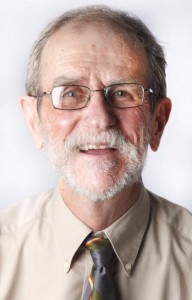By Jim Stasiowski
What the young woman said decades ago still haunts me.
In those days, I was a youngster in the ranks of writing coaches, most of whom were renowned writers or editors from prestigious newspapers. I had had a good run as a reporter, columnist and editor, though only at feisty yet modest local papers, so in the early coaching days, I had neither a glowing reputation nor an ego brimming with journalistic savvy.

I was coaching Eileen, an enthusiastic fact-gatherer, but instead of composing stories, she made lists, practically chained to the format of the inverted pyramid by placing Fact No. 1 in the first paragraph, Fact No. 2 in the second, then No. 3, etc., until the product was precisely 15 facts, translated to 15 inches, adhering to the preferred story length of that follow-the-leader (meaning: USA TODAY) era.
What her stories lacked, however, was a voice, a drill sergeant that would turn a disorderly collection of facts into a powerful, cohesive, readable unit.
When I told her she needed to be not a mere displayer of information but rather a fervent teller of stories, she responded with: “But I’m not a natural writer.”
Condemned though she assumed she was to a life of fulfilling half the role of a newspaper reporter, Eileen at least had the self-awareness to ask for help.
My help.
To that point, I had been more of a schoolmarm than a real coach. I had worked with reporters on technical things – grammar, word usage, transitions, story organization, which quotations worked and which were of little use – but with Eileen I was facing the challenge of guiding a motivated young woman who was convinced she lacked the skill to assemble significant facts into something readers would find either enjoyable or compelling, preferably both.
Instead of trying to dazzle Eileen with slogans (“Tell it to mom”) or academic processes (“First, make an outline”), I told her of the time I had been assigned to look into a sensitive, complex situation concerning a prominent local judge.
I spent weeks gathering information and interviewing sources, I told Eileen. I had notebooks overflowing with facts, statistics and the mandatory both sides. But I was stalled; I didn’t know how to knit all the elements together.
My editor ordered me to stop reporting and write the story, so I devoted a full afternoon to it, and after I had written 18 paragraphs, I read them.
They were awful.
Frustrated, I stood up from my desk, walked to the newsroom watercooler, took a long drink, turned from it and met the eye of a colleague, Bruce.
“Jim,” he said, “how’s it going?”
“Lousy,” I said, practically collapsing in defeat.
“Your judge story?” Bruce said.
“A disaster.”
“Tell me about it,” he said.
Without thinking, without planning, without a goal except to banter with a friend, I started talking. Words poured forth in full sentences, paragraphs, even, and they were inspired words, organized totally by the storyteller – the natural storyteller, I must add – who lives within us all.
And I realized that nothing I was saying had appeared in what I had written to that point on that afternoon. I returned to my desk, deleted all 18 paragraphs and started over.
It still was far from perfect, but it was a real story, the development of a single central conflict. As I read it, I heard my own voice.
I said to Eileen, “You say you’re not a natural writer. OK. But what you are is a storyteller. You could not have arrived at where you are today – 16 years of school, a respected worker, a family member, a friend to many – without being able to carry on meaningful, engaging, conversations. And conversations almost always are stories. We talk about what we are trying to do, we talk about what we have overcome or failed to overcome. We listen to others telling us the same things. That’s conflict development. Storytelling.”
As you’re gathering facts, I told her, see the story coming together. At the time, I didn’t have the words of one of our most successful newspaper-storytellers to bolster my guidance, but here’s what Mark Bowden, author of “Black Hawk Down” and other celebrated stories, once wrote: “Reporting is more than just collecting information or investigating. It is an ongoing process of drawing, disassembling, and then redrawing the story in your mind, letting your vision of the story feed your reporting and letting the additional reporting, in turn, reshape the story.”
Eileen didn’t lack natural talent; rather, she feared making a mistake, so she relied on the safety of simply recording facts.
All journalists must cultivate the confidence to free their inner storyteller.
The best way?
Tell it to Bruce.
THE FINAL WORD
You probably have written that graffiti was spray-painted on a wall, and that’s OK, provided the wall bore two or more such messages.
If, however, the wall had but one spray-painted message, that was a graffito.
 Nevada Press Association The best in Nevada journalism since 1924
Nevada Press Association The best in Nevada journalism since 1924

Hi, I am trying to reach Jim Stasiowski.
He ws my former writing coach but can’t find a phone numberr for him.
Can you please forward my info to him?
Thanks,
Todd
717-413-9630
Hi, I am trying to reach Jim Stasiowski.
He ws my former writing coach but can’t find a phone numberr for him.
Can you please forward my info to him?
Thanks,
Todd